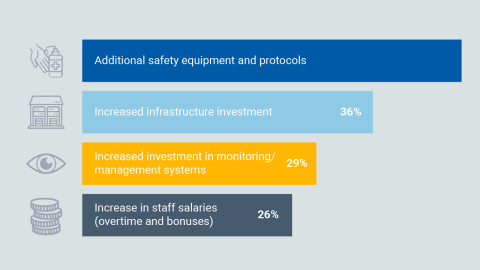The bigger the outage, the greater the need for explanations and, most importantly, for taking steps to avoid a repeat.By any standards, the outage that affected Facebook on Monday, October 4th, was big. For more than six hours, Facebook and its…
filters
Explore All Topics
Supply chain upheaval is one of the pandemic’s ripple effects, and the data center sector has not been spared. For most operators and vendors, supply logistics will remain a source of uncertainty for the near term. In Uptime Institute’s Global Data…
Many analysts have forecast an explosion in demand for edge data centers. After a long, slow start, demand is beginning to build, with small, prefabricated and mostly remotely operated data centers ready to be deployed to support a varying array of…
A recent outage at Akamai took down access to cloud services from Amazon Web Services and Oracle, as well as online services for American Express, Charles Schwab, Costco, Delta Airlines, FedEx, United Parcel Services, and many, many others, mostly…
The pandemic has accelerated some long-term trends toward greater use of digital services, remote working and remote operation. Overall, costs have been pushed up, but other impacts are less clear — some are even counter-intuitive. Many…
In the 12 months from early March 2020 to April 2021, COVID-19 made a big impact on how and where IT was used. This had a surprising — and in some ways paradoxical — impact on IT service availability and the number and severity of outages recorded…
A recent outage at content delivery network Fastly took down thousands of websites in different countries, including big names, such as Amazon, Twitter and Spotify, for nearly an hour. It is the latest large outage highlighting the downside of a key…
Cloud, hosted and many other internet-based services and workloads are designed to operate with very low failure rates. Large (at-scale) cloud and IT service providers use an array of software and data management tools, strategies and services to…
Data center uninterruptible power supply (UPS) systems are evolving. New technologies are enabling various electrical approaches. But will UPS systems of the future meet the changing requirements of operators? This report discusses UPS adoption…
Across the world, data center owners and managers are striving to buy more renewable energy and reduce their dependence on fossil fuels. The global internet giants and the largest colocation companies have led the way with huge green energy…
Avoiding downtime remains a top priority for all managers of critical infrastructure. But as technology changes, and as the demands placed on IT change, so do the types, frequency and impacts of outages, as well as the best practices in outage…
The catastrophic fire that occurred at OVHcloud’s SBG2 data center in Strasbourg, France (see Note 93, The OVHcloud data center fire) has led many operators to question their vulnerability to fires.Fires at data centers are a constant concern, but…
The fire that destroyed a data center (and damaged others) at the OVHcloud facility in Strasbourg, France, on March 10-11, 2021, has raised a multitude of questions from concerned data center operators and customers around the world. Chief among…
Recent extreme weather-related events in the US (the big freeze in Texas, fires on the west coast) have once again highlighted the need for data center operators to reassess their risks in the face of climate change. The topic is discussed in depth…
In Uptime Institute’s recent report on preparing for the extreme effects of climate change (The gathering storm: Climate change and data center resiliency), there were over a dozen references to the dangers of extremely hot weather, which can…
 Intelligence Team
Intelligence Team

 Jacqueline Davis
Jacqueline Davis
 Dr. Tomas Rahkonen
Dr. Tomas Rahkonen
 Andy Lawrence
Andy Lawrence

 Daniel Bizo
Daniel Bizo

 Jay Dietrich
Jay Dietrich

